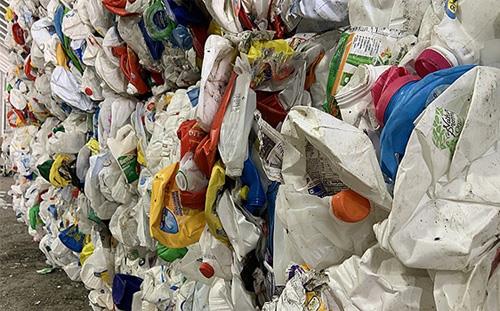
If you want to keep the mood light over holiday dinner, skip the PBS Thanksgiving Eve special on plastic waste.
If you'd like a good update on a global problem that's choking parts of the planet as we speak, then spend a very worthwhile hour checking out The Plastic Problem, a PBS Newshour special that airs Wednesday at 10 p.m. ET (check local listings).
It's somber stuff, as you already know if you've seen the periodic news reports on things like the giant islands of plastic waste in the Pacific Ocean.
What The Plastic Problem adds to those depressing stories are a few rays of hope – that smart people are assessing the problem, and a few governments and producers are joining worried individuals in acting on it.
Hosted by Amna Nawaz, The Plastic Problem represents a year of investigation by a Newshour team that traveled everywhere plastics go. That particularly means Southeast Asia, where a constant and growing stream of used plastic waste washes up on the shores of places like Easter Island and Thailand.
That's just the waste that makes it to shore. The South Pacific Garbage Patch (SPGP), which thanks to ocean currents hovers offshore, has already grown to one and a half times the size of Texas.
Much of the SPGP is the stuff we use in everyday life, like water bottles and takeout food containers.
Many of us throw those items into recycling bins, thinking we have removed them from the waste stream, and sometimes we have.
But we still collectively generate far more leftover plastic than recyclers can handle. In the U.S., about 10% of plastic ends up being recycled. It's higher in Europe, but it's not high enough anywhere, so the waste dumps and compacted stacks and plastic islands keep growing.
The Plastic Problem doesn't demonize plastic. It notes that in many areas, plastic is like a miracle drug. It was and remains invaluable for safe medical packaging. It provides lightweight components for conveniences and necessities like phones and communication equipment. It enables us to keep food fresh for much longer.
The problem is that unlike other materials such as metal, plastic never goes away. Several experts here note that it can take plastics 500 years or more to fully degrade, meaning that all the plastic made since the Plastic Age began around 1950 is still around in some form, with hundreds of tons being added daily.
The best we can do, Nawaz's team concludes, is slow the rate of plastic waste growth, and that means focusing on two avenues.
First, we can cut down on single-use plastics, like the food bags we pick up at supermarkets. Single-use plastics, say experts here, constitute some 40% of all plastic products.
Second, we can improve our recycling rate. Some scientists think this is a dead-end since plastic can't be recycled indefinitely and thus will inevitably end up as waste at some point. But corporate sustainability officials here, from Unilever and Coca-Cola, argue that aggressive campaigns to reclaim their packaging will cut way down on the amount of new plastic they require.
Recycled plastic is also slowly being integrated into more products, including paving material for highways.
At the moment, though, The Plastics Problem warns, we're losing the battle. By 2050 there could be more plastic than fish in the oceans, and plastic in the oceans – and lakes – kills fish.
Nawaz's team doesn't propose any one, grand solution, or even a multi-point action plan. Rather, it touches on ways in which experts are trying to break down the science and find solutions that don't involve just dumping plastic waste in developing countries or burning it and sending toxic chemicals into the air.
Inefficient and insignificant as it might seem against the backdrop of the plastics world in general, The Plastics Problem suggests the ultimate answer may lie largely with you and me and our willingness to eliminate one plastic bag at a time.